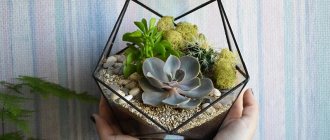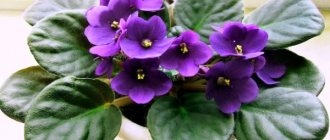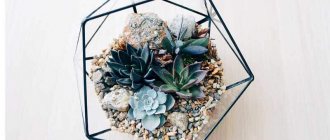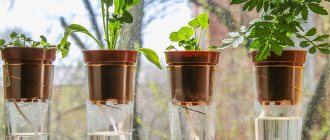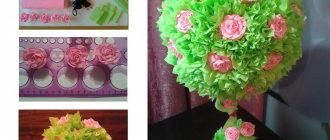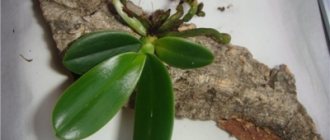Anyone who has ever seen this plant cannot remain an indifferent observer. Its chic spreading branches with glossy emerald-colored leaves will decorate any interior.
Zamioculcas is considered a tropical guest in our area. Its homeland is the African continent. It is the only representative of plants of the Araceae family and has the botanical name Zamioculcaz zamiifolia.
In addition to the official name, this indoor pet has another name: “dollar tree”.
Land for Zamioculcas - what kind is needed
The main requirement that this flower places on the soil is good breathability. The most suitable combination is turf soil and sand with the addition of small pebbles or expanded clay.
This mixture will provide the rhizome with the maximum amount of oxygen for normal growth and development. Thus, it is not recommended to use loamy soils with a high level of humus for planting dollar trees. Such a mixture can lead to root rotting due to its ability to retain water for a long time.
If you use self-prepared soil rather than purchased soil, it is recommended to thoroughly disinfect the mixture before direct planting. This can be done by pouring boiling water over the substrate, or by placing it in the oven for a while.
Is soil suitable for zamioculcas for cacti, what kind of soil is better to buy?
If you don’t have the opportunity or lack the experience to make your own substrate, don’t despair. You can purchase a ready-made mixture at any specialty store.
The most common ones include:
- Soil for cacti and succulents - provides good breathability, which is important for the normal growth and development of the flower;
- A universal substrate mixed with sand and a small amount of expanded clay or perlite. These mixtures are in no way inferior in quality to those made by hand.
In addition, store-bought mixtures can be a real salvation for a novice gardener, because they will reduce the risk of making a mistake and destroying the plant to a minimum.
Suitable composition
The main requirement for soil for zamioculcas is sufficient air permeability. The soil should be loose and fluffy. Compliance with these characteristics can be achieved by mixing the following components in equal proportions:
- turf; sand;
- peat soil with weak acidity;
- leaf soil.
This substrate can be used when planting a purchased plant in a permanent pot, and for replanting in the future.
Before transplanting, the pot must be filled with drainage to 1/5-1/4 part. For these purposes, you can use purchased mixtures, or prepare the material yourself from stones, broken bricks, shards and other objects that drain the soil well. When choosing which soil to plant a plant in, you can also consider ready-made options that are easy to purchase in specialized stores for flower growers.
How to choose ready-made soil
If, when choosing a substrate for zamioculcas, you pay attention to the finished soil, the following will be suitable for this flowerpot: universal soil for indoor plants; soil for cacti and succulents. A universal ready-made substrate has both pros and cons.
Advantages:
- no time spent on preparation;
- In the finished soil, all substances are combined in the required proportions.
Flaws:
- when purchasing ready-made soil, it is impossible to accurately select the components depending on the individual qualities of the plant;
- It is better to supplement a universal substrate for indoor plants with additives in the form of expanded clay, coal and sand, which you will have to add yourself.
When buying ready-made soil, you need to pay attention first of all to the composition. It should list all the components necessary for zamioculcas in quantitative terms or in percentages relative to the total mass. When choosing soil, you need to pay attention to the release date of the package and its expiration date. Upon visual inspection, there should be no mold films on the surface, and when feeling the package, there should be no straws.
What additives should be added to the soil for Zamioculcas?
The main property that substrate additives should have is loosening. The soil must be breathable and fully saturated with oxygen, as a result of which moisture will also be evenly distributed.
You can add the following to the soil for zamioculcas:
- vermiculite;
- expanded clay in small fractions;
- perlite;
- sphagnum;
- coarse river sand.
These materials serve their main purpose well, while also improving the quality of the soil.
An excellent solution would be to use several types of soil. You can take soil from the garden, from the garden, leaf or turf soil.
Problems during cultivation
Due to incorrect landing, some difficulties may arise:
- Loss of leaf turgor. Yellowed and flabby leaves appear from excessive watering. The flower's turgor is lost due to rotting of the root system. At the first symptoms of deterioration, watering should be reduced. If the situation does not improve, the plant needs to be replanted in dry soil.
- Another reason is an unsuitable potty. The flower does not need to be placed in a large container immediately. Soil that is not developed by roots will quickly turn sour and become a breeding ground for rot.
- The need to transplant to another soil. When the soil does not allow air to pass through well and retains moisture, the flower dies. Therefore, if the substrate has become compacted, it is necessary to transplant the plant into light soil.
Popular articles Western Thuja Little Giant
There are some other nuances of plant maintenance:
Broken flower leaf. This part must be placed in water. After 3-4 months, roots will appear and it will be possible to plant a new plant. When rooting, you need to regularly change the water so that it is always fresh. Adding Kornevin to the water will speed up the process. Stopping growth. When there is not enough volume in the pot or insufficient lighting, this can slow down the growth of the plant. The flower develops well in sunny places and in partial shade. But in heavily darkened areas there will be no active growth. Stunted growth may be due to improper transplantation, root damage or infection. Roots rot from waterlogged soil
Watering must be done carefully; between waterings the soil should dry out 3-4 cm. An unsuitable soil mixture also worsens the condition of the plant.
If there are unrotted root tubers, they should be planted in cactus soil. It is necessary to clean the tuber from soil residues, wash it in a weak solution of potassium permanganate and dry it. Then the rotten roots are removed and part of the tuber is removed. The sections should be sprinkled with ash; you can sprinkle them with Oxychom or Fundazol. These products allow you to treat the above-ground part of the plant. The container must be disinfected and the soil replaced.
Three types of soil for Zamioculcas
What kind of soil is needed for the plant? Its composition may vary.
Mix 1
To plant zamioculcas, it is quite possible to mix two types of soil, for example, leaf and turf. If you add a little peat soil to this mixture (all ingredients are taken in equal proportions), then the composition as a whole will have very good characteristics.
Mix 2
This composition will also work. Take turf soil, mix it with sand, then add a little expanded clay and small crushed stone to the mixture.
Mix 3
Take equal parts of turf soil, leaf soil, part of the peat and add sifted sand.
Additional primer ingredients
In general, the dollar tree likes to “bask” in light and loose soil . Water and air must circulate freely through the layers of the earth. The following work well as loosening agents for any soil:
- River sand (preferably large), expanded clay pebbles (preferably small).
- Vermiculite , for example, is excellent at retaining moisture. In addition, it completely lacks an environment favorable for the growth of mold or mildew. It is excellent drainage. You can add it to the soil in any proportions.
- Perlite It is also capable of distributing moisture in the soil and protects the top soil layer from the formation of a dry crust.
- Sphagnum peat moss (translated from Greek as “natural sponge”) is unique. Sphagnum moss, even when wet, allows air to pass through it well. In addition, it has excellent antibacterial properties. This means that adding it to the soil can protect it from infection.
Thus, adding the above additives to the soil for zamioculcas perfectly heals and loosens the soil, and, accordingly, contributes to better plant growth.
Recommended soil composition for indoor dollar tree
Rocky-sandy soil is characterized by good looseness, air and moisture permeability. Other types of soil, especially loam and soil enriched with humus, have the ability to retain moisture for a long time, which will certainly cause rotting of the roots of an exotic plant.
Zamioculcas is able to retain moisture in the tuber system for a long time - a characteristic characteristic of all succulents.
The substrate for a dollar tree must include elements that will make it loose and airy:
- Coarse river sand is an ideal option because it makes the substrate similar in composition to African soil.
- Expanded clay is an environmentally friendly product made from clay and slate.
- Peat moss (sphagnum) promotes unhindered air exchange while protecting the plant from pathogenic bacteria.
- Vermiculite or perlite prevents mold from growing and does an excellent job of drainage.
Important! A good solution would be to simultaneously use several types of soil: leaf, turf and simple garden soil.
Soil pre-treatment
After preparing the earthen mixture, it must be processed for disinfection purposes. The substrate for zamioculcas does not require chemicals, since sterilization can be carried out by exposure to high temperature.
There are 3 main processing methods:
- pouring boiling water over;
- sterilization in a water bath for 1.5 hours;
- Heating in the oven for 30 minutes at 70–90°C.
Primary chemical treatment
ATTENTION! It is not the soil that is treated with chemicals, but the branches of zamioculcas directly in case they are infected with spider mites, aphids or scale insects.
Spraying with a sulfate-nicotine solution will save you from aphids. It is better to disinfect leaves with a cotton swab previously soaked in the solution. One gram of the drug should be diluted in a liter of soapy water. Other pests can be dealt with by an infusion of tobacco or a soap-tobacco solution with alcohol.
Growing and care
Zamioculcas is gaining more and more popularity as a houseplant due to its unpretentiousness.
Is it possible to keep Zamioculcas at home?
The juice can cause an allergic reaction or digestive upset in allergy sufferers and animals if consumed internally. Therefore, it is better to trim and plant it while wearing gloves.
Is it possible to see Zamioculcas in bloom?
At home, it is quite difficult to achieve flowering, but in natural conditions, Zamioculcas forms inconspicuous flowers - cobs wrapped in a pale covering leaf.
Rules for care
To properly care for your indoor plant Zamioculcas, it is important to follow just a few rules.
After purchasing, it is important to adapt the flower to the room in which you plan to leave it for permanent residence. During the process of moving from the greenhouse to the store and to your home, the flower experienced considerable stress, so in new conditions it can shed its leaves, which is the norm. There is no urgent need to plant the plant right away, just carefully remove it from the transport pot and move it to a larger container. in general, the plant is not demanding of light, but for rapid development it is preferable to place it in a brightly lit place. in summer, the dollar tree can be moved to an open space - in the garden, on the balcony or veranda
– favorable room temperature is 20 – 24 degrees; when the temperature drops below 16 degrees, plant growth may slow down or other diseases may manifest. The flower does not require spraying, but dust from the leaves should be periodically washed off with a damp sponge. at home, zamioculcas can grow quite high, so prepare a large container for planting in advance.
Popular articles Is lilac a shrub or a tree? How to grow lilacs at home
Zamioculcas transplant
When choosing a pot for replanting, you need to focus on the size of the tuber’s rhizome, so that in the pot it is evenly covered on all sides with soil and is at a certain distance from the walls of the pot.
The soil for zamioculcas is light and nutritious, for example a mixture of leaf and turf soil with the addition of peat and coarse sand.
Remember the need for drainage to drain water and avoid rotting of the plant roots.
Young zamioculcas plants are transplanted annually into a large container, adult plants are transplanted after 2-3 years. After transplantation, the plant should be watered a little for faster adaptation and growth.
Watering and humidity
All plant organs are designed to retain moisture, so watering should be minimal according to the principle “it’s better not to top up.”
Reproduction of Zamioculcas
Tuber division
Zamioculcas easily reproduces by dividing the tubers, which can be done when replanting the plant by dividing the adult plant into several parts and transplanting them into separate pots.
Cuttings
Zamioculcas can also propagate by cuttings. A cutting is a stem with leaf blades, broken off from the base of the tuber, preferably with a bud. It is placed in sand and lightly watered. Before planting in the ground, it is necessary to dry the leaf in the open air.
Leaves
Zamioculcas reproduces simply by individual leaves, which are placed in light soil and covered with a glass or bag. After 6 - 8 weeks, the cuttings can be planted in separate pots.
How to feed indoor zamioculcas
When the plant is actively developing greenery, apply universal fertilizer for ornamental plants or fertilizer for cacti. Feeding is done once every “week.
The post should be watered first and then fertilized. Any universal fertilizer is suitable, you can also alternate mineral and organic fertilizers.
Caring for Zamioculcas in winter
In winter, Zamioculcas is dormant.
It is important during this period to maintain the temperature at least 12 degrees, otherwise the plant’s leaves may begin to fall. Water no more than once every six months or even once a month. If yellowing of leaves occurs due to dry air, it is necessary to increase the humidity in the room using a humidifier or bowls of water.
As we can see, Zamioculcas is a very easy to care for and unpretentious plant that even a novice amateur gardener can handle.
Therefore, it can increasingly be found in homes and offices. Try to grow a tall and beautiful specimen of Zamioculcas from a small plant.
How to cook it yourself?
If you are planning to plant or replant a dollar tree and there is no way to go to a specialized store for a substrate for a succulent, then preparing a soil mixture suitable for zamioculcas will not be difficult , you just need to know what kind of soil is suitable.
To plant young plants at home:
- We combine 1 part of the turf soil with the same amount of sand, expanded clay and small crushed stone.
- Mix all components thoroughly.
For transplantation:
- We combine leaf soil, turf soil, peat and sand, observing the recommended proportion of 1:1:1:1.
- Mix everything thoroughly until a homogeneous mixture is formed.
Another option: mix equal amounts of leaf and turf soil with the same volume of vermiculite and sand.
Scheme for mixing soils and additives for preparing soil:
- 1 tsp turf soil,
- 1 tsp leaf,
- 1 tsp slightly acidic peat,
- 1 teaspoon of sand without clay fractions.
Possible problems and their solutions
Improper transplantation of a dollar tree and subsequent improper care can lead to many problems. It's worth knowing about them in advance.
Why can leaf turgor be lost?
Yellowed and flabby leaves are the result of overwatering. The turgor of a flower may be lost due to rotting of the root system, and if you do not respond in time, the plant may die. At the first signs of deterioration in the condition of the leaves, it is necessary to reduce watering. If the situation does not improve, the zamioculcas should be transplanted into new dry soil. Do not allow water to stagnate in the pan.
The plant suffers from overwatering
Another reason may be an unsuitable container for the flower. Zamioculcas should not be immediately placed in a large pot. Soil that is not mastered by roots quickly turns sour and becomes a breeding ground for all kinds of rot.
Video: Typical care mistake
When should you replant into different soil?
When the selected soil does not allow air to pass through well and retains moisture, the flower will inevitably die. Therefore, if the plant substrate has become compacted and lumpy, zamioculcas should be transplanted into lighter soil.
If a Zamioculcas leaf breaks
If during replanting what we call a shoot or branch of Zamioculcas, which botanists define as a compound leaf, was damaged, this part of the plant can be placed in water. After 3-4 months it will produce a tuber, and it will be possible to get a new plant. During rooting, be sure to change the water regularly to keep it fresh. To speed up the process, you can add the drug Kornevin to the water.
An accidentally broken Zamioculcas leaf can be rooted in water and a new plant can be obtained.
Stopping growth
Insufficient pot volume or poor lighting can cause dollar tree growth to slow down. It is worth noting that the plant grows well not only in sunny places, but also in partial shade. However, living in very dark conditions will not do him any good.
Stunted growth may be a consequence of improper transplantation, damage to the roots and their subsequent infection. Roots can rot due to waterlogging of the soil.
You need to water carefully; between waterings the soil should dry out by 3–4 cm. An incorrectly selected soil mixture can also cause the poor condition of zamioculcas
If there are unrotten root tubers left, they can be planted in cactus soil. It is necessary to carefully (with a brush) clean the tuber from soil residues, rinse in a weak solution of potassium permanganate and dry. Then remove all rotten roots, and, if necessary, remove part of the tuber itself. Sprinkle the sections with ash, you can sprinkle them with Oksikhom or Fundazol. The above-ground parts of the plant are treated with the same preparations. Flower dishes should be disinfected and the soil should be completely replaced.
How to determine that a succulent needs to change its substrate?
The first time you need to change the soil for a dollar tree is immediately after purchasing it from a flower shop.
Since the plant is transported from afar, suppliers plant it in a special substrate to preserve its root system. This soil is ideal for transportation, but is in no way intended for the growth and development of zamioculcas.
Further transplants of zamioculcas must be started when, after watering, the water stagnates in the pot on top of the soil. Ideally, a loose substrate, completely entwined with the roots of the plant, will quickly allow moisture to pass through, and it will safely fall into the pan.
A compacted earthen lump is a serious obstacle to the path of water : the liquid is not able to saturate the soil and remains on the surface, which threatens the plant with the formation of rotting areas, and subsequently death. Another signal that the plant needs replanting is roots sticking out of the drainage hole.
Attention! The frequency of planned Zamioculcas transplants directly depends on its age: for a young specimen, the soil should be changed annually, and for an adult – once every 3-4 years.
Do not neglect unscheduled transplants , the need for which may be indicated by the following factors:
- covering the soil surface with mold;
- root rotting;
- suspension of plant growth;
- flower disease;
- damage to the flowerpot.
Caring for cyclamen at home
Illumination
In order for cyclamen to grow and develop fully, it needs proper lighting. A western or eastern window sill is best suited for this flower. Since direct rays of the sun can harm the plant, if you have to place it on a south-facing window sill, choose a place away from the window or shade it. The north window is not suitable for a flower, as there is very poor lighting there.
Temperature
In winter, normal development and lush flowering of cyclamen is possible only if the air temperature is between 10–14 degrees. In the warm season, the optimal temperature for such a plant is 20–25 degrees.
Watering
Water the flower with soft water, the temperature of which is 2 degrees below room temperature. It is collected in a container 24 hours before watering and allowed to settle well. Throughout the flowering period, watering should be plentiful. Do not allow the substrate in the pot to dry out, and also ensure that liquid does not stagnate in it. Bottom watering (through a tray) is well suited for cyclamen; in this case, water will not fall on the tuber, core and buds of the bush. When the plant is watered, after 2-3 hours, be sure to pour out excess water from the tray. At the end of flowering, watering is reduced, and when all the foliage has completely dried out and the tuber is exposed, watering should become very meager and infrequent.
Air humidity
In order to increase air humidity, the bush is moistened with a spray bottle, using rain or well-settled water. However, such a procedure can only be carried out until buds form, and after that, another method is used to increase the humidity level: wet peat or pebbles are poured into a tray and a flower pot is placed on it. Make sure that the bottom of the container does not come into contact with water.
Fertilizer
You need to start feeding the flower from the moment its leaves appear; for this, use a complete mineral or organic fertilizer. As soon as flowering begins, all feeding is stopped. Remember that if there is too much nitrogen in the substrate, then this can lead to rot on the tuber.
Rest period
As soon as the foliage of a flower begins to dry out and die, this indicates that a dormant period has begun. Reduce the frequency and abundance of watering, and this should be done gradually. And when the plant is completely bare, water it sparingly and infrequently.
The room where the plant is located is systematically ventilated. If possible, move it to a balcony that is protected from the sun. In August or September, the bush is moved to a well-lit place and watering begins to gradually increase. During the dormant period, the flower can be stored at home in another way: when the bush has faded, reduce watering, and when all the foliage has died off, the pot should be turned 90 degrees and in this position it will be stored until the last summer or first autumn weeks .
Bloom
Cyclamen grown at home is capable of blooming magnificently for up to fifteen years in a row, and up to 70 spectacular flowers will form on it annually. After the flowers wither, they, along with the peduncle, are carefully pinched off near the tuber; cutting them off is extremely undesirable. Then the rupture site is treated with powdered charcoal.
Replanting cyclamen
Transplantation is carried out annually in August or September, and this is done after the first foliage appears from the tuber. The container for transplantation is chosen to be wide and filled with loose substrate with a pH of 5.5–6. The approximate composition of the soil mixture is: humus, sand and peat (one part each), and also leaf soil (2 or 3 parts). You can also use a substrate of the following composition: sand, humus and leaf soil (1: 2: 4). If the pH of the soil mixture is above 6.5, then the likelihood that the plant will be affected by fungal diseases increases.
After the bush is removed from the pot, cut off all rotten roots, while trying not to injure healthy ones. When planting a tuber, keep in mind that it should rise by half or a third above the soil mixture, thanks to this the flowering of the cyclamen will be more magnificent. To avoid stagnation of water in the root system, do not forget to make a good drainage layer at the bottom of the container.
How to properly transplant cyclamen at home
Watch this video on YouTube
Virulence
The juice of any part of the Persian cyclamen bush, as well as its tuber, contains toxic substances that can cause diarrhea, cramps and vomiting.
What are the benefits of cyclamen?
An infusion is prepared from cyclamen, which is used for colic, rheumatism, neuralgia, digestive disorders and flatulence.
Transplant tips
It is important to pay attention to the following aspects:
- The best time for transplantation is considered to be March and April, with an optimal amount of heat and a suitable level of lighting;
- When transferring rhizomes to a new container, it is not recommended to completely cover them with soil. This will help avoid waterlogging and, as a result, rotting, which is dangerous for the flower;
- If, during transplantation, rotted roots are found on the root, they must be carefully separated from the general lump to stop the spread of the problem;
- It is recommended to replant zamioculcas in a nutrient substrate, which contains clean sand, peat, leaf soil with the addition of humus in equal proportions. To increase breathability, it is recommended to add crushed expanded clay;
- Before replanting, place a drainage layer of small pebbles or stones at the bottom of the pot;
- It is recommended to water the zamioculcas for the first time no earlier than two days after transplanting the flower into a new container.
After the plant has finally settled into its new pot, it is important to monitor root development. This will help you notice in time the moment when the flower needs to be replanted without harm to it.
Replanting after purchase
Many novice gardeners immediately transplant plants into a new substrate after purchasing them, but in the case of Zamioculcas, this should not be done.
After purchase, it is recommended to follow the following sequence of actions:
- Place the plant in quarantine - place it in a room where there are no other flowers. This event will help you notice disease or pests in time without the risk of infecting other flowers;
- If a disease or parasites are detected, carry out therapy as quickly as possible;
- After two weeks, the flower can be replanted.
Culture propagation methods
There are four main ways to effectively propagate European cyclamen at home.
The Persian subspecies is successfully divided only by seeds or division of tubers. The essence of the methods: seeds. Experienced flower growers practice collecting their own seed, since the purchased product often does not germinate. To form a seed capsule, artificial pollination is performed. Pollen is transferred from male flowers with a soft brush to the female parts of the inflorescences. The positive effect of the procedure is indicated by the thickening of the peduncle, in place of which a dry seed fruit is formed. Before sowing, the seed is soaked for 12 hours to soften the hard skin and activate biological processes. They are kept in biostimulants for growth and treated with a weak aqueous solution with potassium permanganate. The elements are buried at intervals of 4–5 cm, covered with polyethylene, regularly moistening the substrate. The covering material is removed when seedlings appear after 1.5–2 months. Seedlings are planted in separate pots. The first flowering when propagated by seeds is expected no earlier than 1 year; by dividing the main tuber or propagating daughter formations. This method is used only after the cyclamen has faded. The rhizome is removed from the substrate, dried, divided into parts
It is important to properly separate the children from the mother. Each part should have 1–2 buds
The side cuts are sprinkled with crushed activated carbon or wood ash. After the sidewalls have healed, the cuttings are doused with boiling water, placed in moist soil, and watered regularly. The tuber element of the Persian subspecies is not completely buried in the ground, leaving 1/3 above the surface. When separated by daughter bulbs, they are buried in individual containers;
rosettes (horns). This is an effective method of propagating the home culture of the European variety. Side shoots are cut off from the head tuber of a mature plant, buried in moist soil, and covered with glass or polyethylene. After 14–16 days at an optimal temperature of at least 18–20 degrees above zero, the cutting will begin to root. Do not take more than 1 rosette from one bush to avoid the death of the flower and infection; Leaf propagation is the most difficult method, in which there is a high risk of material death. The cut leaf blade is placed in water and waits for roots to form from the branch. The green part with the formed roots is buried in the ground, leaving the leaf on the surface. The planting is covered with a glass jar or polyethylene. Only the European subspecies is propagated using this method. Often, when kept in water, the lower part of the propagated element begins to rot, and the top begins to dry out.
Important! When separating cultures, use only tools that have been disinfected. Wipe the sharp parts of scissors or garden knives with a solution of potassium permanganate, hydrogen peroxide or alcohol
This will prevent infection.
For planting, prepare spacious containers where the crop will grow comfortably, the tuber of which can reach 15 cm in diameter. Clay or plastic pots with holes with drainage in the bottom are suitable. Expanded clay or fine gravel is laid as a drainage layer.
Advantages of beds
What do we get? An exceptionally nutritious mixture in which everything just grows beautifully! In the spring, digging takes a minimum of time, the grass does not creep through the fence, and the same dandelions are easily pulled out. The substrate holds moisture well and does not crack even in drought. It is loose, so any root system develops perfectly. The results are simply amazing. I have little space on my plot, only 6 acres, so the problem of yield is relevant.
I left a distance of approximately 45-55 cm between the beds to make it convenient to mow the grass. There is no point in laying tiles; the weeds will grow anyway. A small stool is placed for processing while sitting. A wheelbarrow passes, and the width of the bed allows you to reach the opposite edge. But the main thing is the nutritional mixture! In the spring you have to add a little, but not every year, but every other year.
An example of a strawberry harvest from the garden
Try it - just a week of work, and many years of big harvests!

